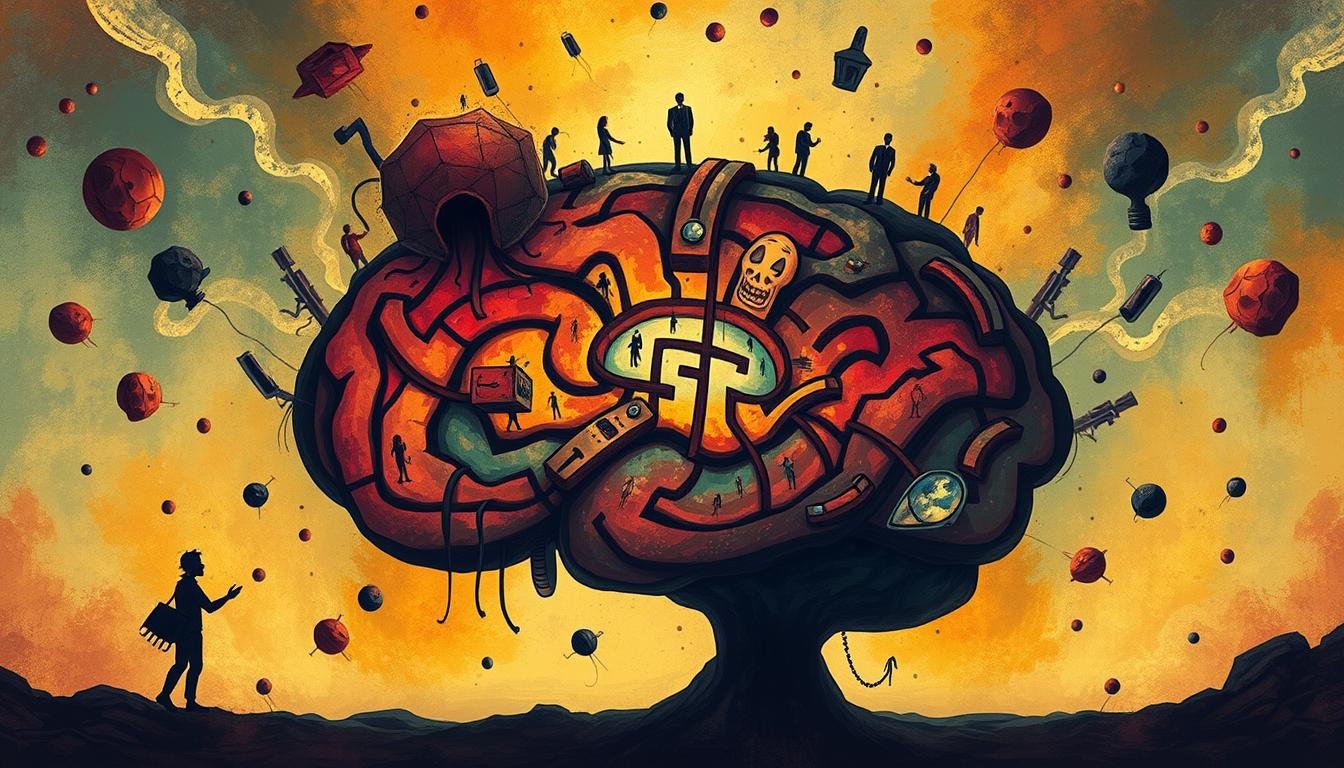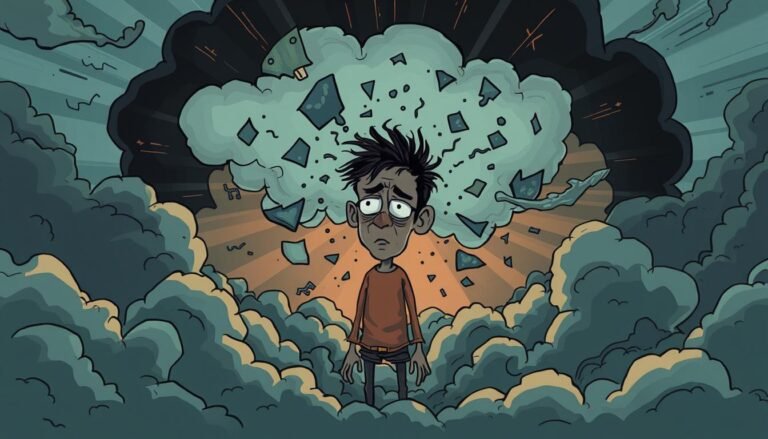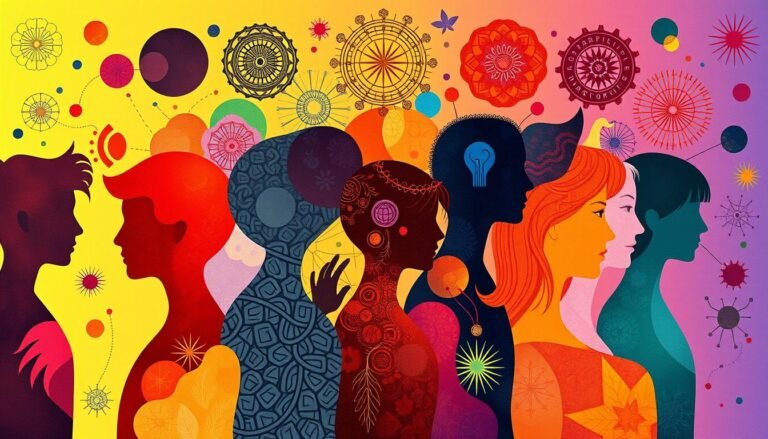Exploring Psychoanalytic Theory: Key Concepts
Ever wondered what drives our thoughts and actions? Psychoanalytic theory, started by Sigmund Freud, explores the human mind’s depths. This approach has fascinated scholars and therapists for over a century.
Born in 1856, Freud changed how we see the human mind. His work on the unconscious mind and its role in behavior is key to modern psychology. In 1899, he published “The Interpretation of Dreams,” a book that introduced many psychoanalytic theory concepts.
Freud’s theory centers on the unconscious mind, a place of hidden desires and repressed thoughts. This idea questions our belief in free will and conscious choices. Freud believed our actions are often driven by unconscious motives, influenced by our early years.
Psychoanalytic theory also talks about the id, ego, and superego, which make up our personality. These parts work together to balance our desires, rational thinking, and moral sense. Knowing about these can help us understand ourselves better.
The Foundations of Psychoanalytic Theory
Psychoanalytic theory is a key part of modern psychology. It started in the late 19th century with a groundbreaking thinker. Their ideas changed the field forever.
Sigmund Freud: The Father of Psychoanalysis
Sigmund Freud, an Austrian neurologist, started psychoanalysis. Born in 1856, his work was a big deal for decades. His theories on the mind sparked debate and changed how we see mental processes.
The Unconscious Mind: The Core of Psychoanalysis
Freud’s most famous idea was the unconscious mind. He thought our thoughts and actions are driven by hidden forces we don’t know about. This idea changed psychology, showing that much of our mental life is hidden.
The Importance of Early Childhood Experiences
Freud believed early childhood experiences shape our personality. He proposed a model of development with five stages: oral, anal, phallic, latency, and genital. Each stage affects our future behavior and relationships.
“The mind is like an iceberg, it floats with one-seventh of its bulk above water.”
Freud’s ideas still influence us today. Studies show psychodynamic psychotherapy, based on his theories, helps with mental health issues. Though debated, Freud’s work is a starting point for understanding the human mind.
The Structure of the Mind: Id, Ego, and Superego
Freud’s theory of personality breaks down the mind into three main parts: the id, ego, and superego. This idea is at the heart of psychoanalytic theory. It helps us understand human behavior and how our minds work.
The id is all about our basic needs and wants. It’s there from the start and always looks for quick satisfaction. The ego, on the other hand, grows from the id. It helps us balance our desires with what’s real and acceptable.
The superego comes into play around age 5. It’s our inner voice of right and wrong, shaped by our parents and society. It tries to make us better by keeping our bad impulses in check and pushing us towards being our best selves.
| Component | Function | Principle |
|---|---|---|
| Id | Instinctual drives | Pleasure |
| Ego | Mediates reality | Reality |
| Superego | Moral compass | Perfection |
The way these parts work together influences our thoughts, feelings, and actions. A well-balanced psyche is key to a healthy personality. But, when they clash, it can lead to mental health issues. Knowing about this model gives us a deeper look into what makes us human and how to keep our minds healthy.
Psychosexual Stages of Development
Sigmund Freud’s psychosexual stages are key to psychoanalytic theory. They explain how sexual energy, or libido, influences personality growth from birth to adulthood. Freud outlined five stages, each linked to a specific erogenous zone and potential fixations.
Oral Stage
The oral stage spans from birth to 18 months. Infants find joy in activities like sucking and biting. Fixation here can lead to habits or traits in adulthood.
Anal Stage
Children are in the anal stage from 18 months to 3 years. They learn about toilet training. The way parents handle this can influence their behavior later.
Phallic Stage
Between 3 and 6 years, children notice genital differences. This stage introduces the Oedipus complex, with unconscious desires for the opposite-sex parent. Unresolved issues can impact future relationships.
Latency Stage
From 6 to puberty, sexual interests are suppressed. Children focus on social skills and learning. This stage is vital for making friends and finding interests outside the family.
Genital Stage
Starting at puberty, people develop mature sexual interests. Navigating earlier stages well leads to healthy adult relationships and sexuality.
| Stage | Age Range | Focus | Potential Fixation |
|---|---|---|---|
| Oral | 0-18 months | Mouth | Smoking, overeating |
| Anal | 18 months-3 years | Bowel control | Obsessive cleanliness or messiness |
| Phallic | 3-6 years | Genitals | Sexual dysfunctions |
| Latency | 6-puberty | Social skills | Difficulty forming relationships |
| Genital | Puberty onward | Mature sexuality | Inability to form intimate relationships |
Defense Mechanisms in Psychoanalytic Theory
Sigmund Freud first talked about defense mechanisms in 1894. His daughter, Anna Freud, later built on this idea. These strategies help us deal with anxiety and protect our ego. They are key in psychoanalytic theory, helping us manage stress and tough emotions.
Repression is a basic defense mechanism. It pushes unacceptable thoughts into our unconscious mind. Denial is another, letting us ignore painful truths. While these can help short-term, using them too much can lead to problems like anxiety or phobias.
Other defense mechanisms include projection, displacement, and sublimation. For instance, sublimation turns bad impulses into good actions. Anna Freud found ten major defense mechanisms, adding to her father’s work. Knowing about these can help predict how we grow and guide therapy.
It’s important to recognize defense mechanisms in therapy. They help reveal hidden conflicts and increase self-awareness. Some mechanisms stay from childhood, while others change or get worse under stress. Therapy that focuses on these mechanisms can be as effective as other treatments for mild mood disorders.
Source Links
- Psychoanalytic Terms & Concepts Defined – American Psychoanalytic Association
- An Introduction and Brief Overview of Psychoanalysis
- The History of Psychology—Psychoanalytic Theory and Gestalt Psychology
- Psychoanalytic Therapy – StatPearls – NCBI Bookshelf
- The Foundations of Psychoanalysis
- Id, Ego, & Superego | Freud & Examples
- Id, Ego, and Superego Are Part of a Structural Model of Personality
- What Are Freud’s Stages of Psychosexual Development?
- Freud’s Stages of Human Development: 5 Psychosexual Stages
- Freud Developmental Theory – StatPearls
- Defense Mechanisms In Psychology Explained (+ Examples)
- Defense Mechanisms – StatPearls – NCBI Bookshelf








